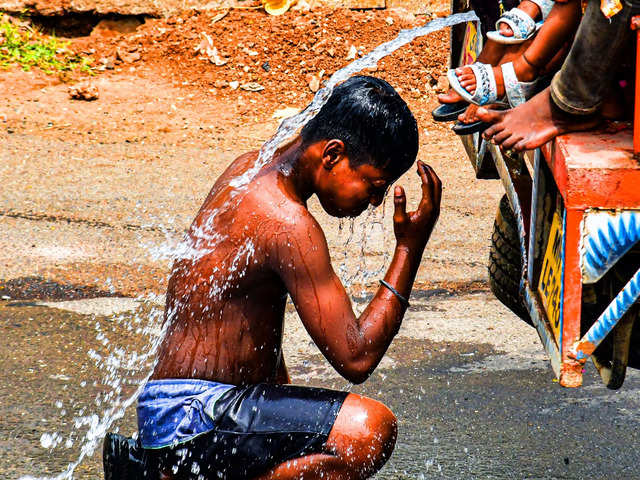
Tinder
Tinder's growth story in India
Mar 3, 2021, 10:00 IST
ad-tech
Word-of-mouth has helped us grow in India, our community members are our best marketers: Taru Kapoor, Tinder
- Since its launch in India in 2o15,
Tinder has been able to find a loyal user base in India, andTaru Kapoor , General Manager, India, Tinder feelsword-of-mouth has played an important role. - With more and more new users coming onto its platform, Tinder is now focusing on innovating to make its offering more meaningful for its users, Kapoor shares with us.
Since its entry in India, the idea of meeting people online has become synonymous with Tinder, according to Taru Kapoor, General Manager, India, Tinder.
Globally, Tinder is the market leader in the dating apps ecosystem. Recent data from Statista.com revealed that Tinder generated the largest in-app purchase revenue in January (about $ 65 million). It is available in 190 countries, in over 40 languages and has been downloaded more than 430 million times and led to over 60 billion matches.
Meanwhile, the
So the opportunity at hand is huge and platforms like Tinder have been doing all in their might to work towards capturing a bigger market share.
In a recent conversation with us, Kapoor spoke to us at length about all that is happening at Tinder, how the experience they are able to give to users has helped them grow through word-of-mouth and how they are upping their game, one industry-first innovation at a time!
Tinder’s lockdown story
When the government announced the national lockdown, we had never imagined we would be sitting at home, even a year later, scared of venturing out of our safe spaces. The lockdown had profound effect on all of us in the sense that it has revolutionized the way we shop, eat, talk, and even date.
In India, during the lockdown, conversations were up an average of 39% and the average length of conversations was 28% longer.
“The lockdown led to a lot of engagement, people were having longer conversations and in general we saw people spend more time on our platform,” shared Kapoor. Seeing the increase in traction on the platform, Tinder innovated quickly and added lots of features. In the initial days of the lockdown, they opened up their Passport feature which enabled people to search for potential dates in a location of their choice. Dating online is a different ballgame and therefore they introduced a few more features, like face to face video calling, 'Passions', a feature that helps members share more about themselves effortlessly, all in an attempt to help users find human connections in an otherwise dismal time.
For Tinder,
The India story
When Tinder had launched, the metro cities used to drive its growth. However, the last few years have seen smaller cities jump onto the Tinder bandwagon. “India isn’t really one monolithic country by any stretch of imagination. While initially the metros were growing fast, now the smaller cities are witnessing good growth in India. In fact, in the last few years, the rate of growth in the Tier II and III cities has been more than double the rate of growth in bigger cities,” shared Kapoor.
“At its very core, connecting with other people is a very human need and we have been trying to facilitate this need to find connections, friendships and relationships with the help of technology. I have been leading Tinder for more than five years now and in that time, there have been very visible changes in consumer behavior. There has been a cultural revolution in India especially as technology and smartphones have become a norm. There has been a huge increase in decision autonomy, for the youth and for women and there’s a desire to have more choice and control over their life decisions. So we have been continuously working towards understanding what Indian users want, how to make the platform safer, more engaging and valuable, particularly for Indian women. That’s been our focus and we will continue to innovate on that,” she added.
What worked well for Tinder
When Tinder launched, initially the platform witnessed a lot of word-of-mouth marketing. Despite coming up with its first campaign for India, a digital film, in 2016, its users are its best advocates.
“We had people using the platform and having a great experience. They in turn recommended us to their friends and that led to us receiving a lot of growth initially. So our community members were our best marketers,” she explained.
Tinder eventually did release quite a few campaigns including 'Start Something Epic' and 'Adulting Can Wait'.
On what are the factors that helped Tinder do well in India, Kapoor said, “There has been an increase in financial independence and social mobility. The millennials and GenZ want more agency over their life and decisions. This desire to choose people who you are friends with, who you are dating or are in love with and want to marry is very strong. And the magic of Tinder is how simple and intuitive it is as a product. It's a judgment-free, safe place where you can be yourself and no archaic rule is forced upon you. Tinder invented the double opt-in which is the simple idea that if you like someone they have to like to back before you can exchange messages, which means there is no unwanted attention which women in India are all too familiar with. So suddenly, you can have a product that personalizes, localizers, adapts to you and an ecosystem that could connect you to people with like-minded intentions who you otherwise would never have met. So was the perfect storm where the fundamental intent met with the tool and the technology and a safe community to make it happen.”
Tinder’s future focus
Tinder has been working on personalizing its platform and introducing innovative features to make the overall experience much more immersive. So going ahead, where will its next phase of growth in India come from?
“Our focus right now is leading with innovation. The first phase of innovation over the last five years was how it became a norm to find someone online, for relationships to begin on the internet and for people to connect just as deeply as they would in the physical world. The second phase which is happening now is actually led by GenZ who have grown up on social internet. The task at hand for us is how do we help people have better shared experiences online, how do we innovate in a way that we bring them together, entertain them, help them get to know each other better and have a shared context so that those connections become more meaningful and deeper. We are trying to give them that foundation that they are seeking in a better way. We are investing heavily in digital shared experiences and we will continue to do that over the next few months too,” said Kapoor.
INSIDER INTELLIGENCE REPORTS







